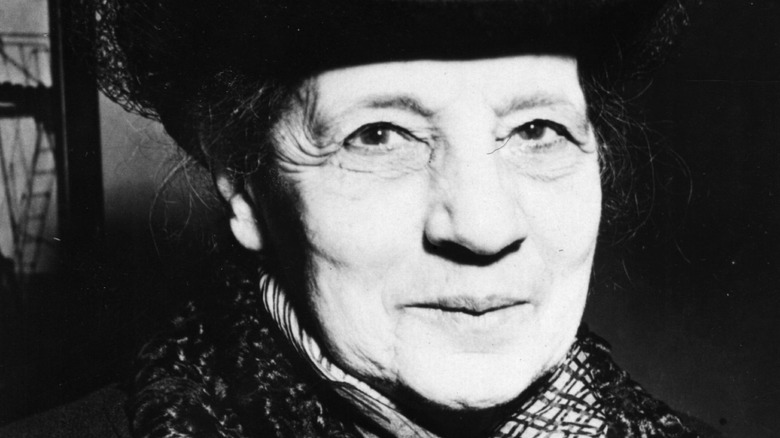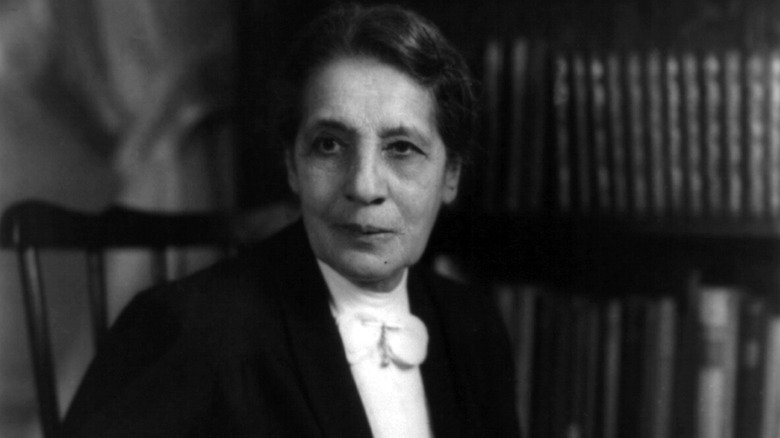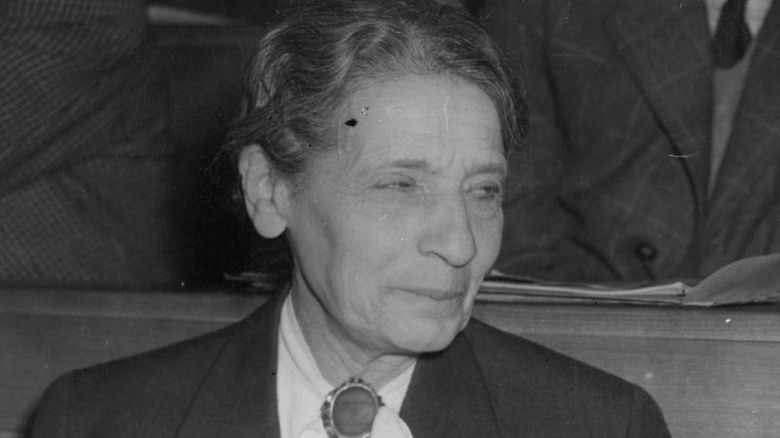The Truth About The Woman Who Figured Out Nuclear Fission
Austrian physicist Lise Meitner was not only part of the scientific team that discovered nuclear fission, she was also vocal about the destructive potential the reaction had and spoke out against nuclear weapons. Born November 7, 1878 in Vienna, Austria, Meitner was privately tutored by her father, as girls were not allowed to attend the regular local high school. She entered the University of Vienna in 1901 after passing their difficult entrance exams, where according to the Jewish Women's Archive she was the first woman admitted to school's physics lectures and laboratories. She went on to become the second woman to ever earn a doctorate degree from the university in 1906, per the Atomic Heritage Foundation. Meitner then relocated to Berlin, Germany where she attended the lectures of physicist Max Planck, best known for his discovery of the quantum of action, which laid the groundwork for quantum theory and eventually earned him the Nobel Prize for Physics in 1918.
Meitner became Planck's assistant after a year and worked as an unpaid research scientist at the Berlin Institute of Chemistry where, along with other women, she was denied access to the institute's labs. She met radio-chemist Otto Hahn in 1907 and the two worked together for the next 30 years. They discovered the isotope of protactinium in 1917 and Meitner won the Leibniz Medal. Hahn was eventually named the Administrative Director of the Kaiser Wilhelm Institute for Chemistry, while Meitner supervised the institutes Physics Section for over 20 years. In 1926 she became Germany's first female full professor, per Scientific American.
Lise Meitner discovered barium as well as nuclear fission
From 1924 to 1934, as reported by the Jewish Women's Archive, Meitner and Hahn were nominated for the Nobel Prize in Chemistry for 10 consecutive years. In 1936 they were nominated for the Nobel Prize in Physics by Max Planck and others, and Meitner was nominated for the Physics Prize three times by Niels Bohr after World War II. In 1938, the Third Reich forbade famous scientists to travel abroad. Bohr made plans to sneak Meitner out of Germany and accompanied her into the Netherlands. She then went on to Denmark and Sweden and went to physicist Manne Siegbann's institute in Stockholm. According to Ruth Lewin Sime's book "Lise Meitner: A Life in Physics," "Neither asked to join Siegbahn's group nor given the resources to form her own, she had laboratory space but no collaborators, equipment, or technical support, not even her own set of keys..."
In November 1938, Hahn and Meitner secretly met in Coopenhagan, Denmark where they accidentally discovered the element barium while testing a uranium product they thought to be radium. At the same time, Meitner and her nephew, scientist Otto Frisch, discovered, explained and named nuclear fission, using Bohr's "liquid drop" model of the nucleus. Their findings were published in Nature in 1939 and led to the creation of the Manhattan Project, the U.S. effort to create an atomic bomb, which Meitner was invited to work on and refused, stating, "I will have nothing to do with a bomb!"
Meitner was nominated for the Nobel Prize multiple times but never won
In 1944, Hahn was awarded the Nobel Prize for Chemistry for his research into fission. Per Scientific American, he at first referred to the work as a collaborative effort between him, Meitner, and his assistant, Fritz Strassmann, but he would later insist that this the experimental chemistry he and Strassmann had done was solely responsible for the discovery, even implying that Meitner's physics contributions had actually hindered the discovery. The trio was eventually awarded the prestigious Enrico Fermi Award in 1966.
Despite multiple nominations, Meitner never won the Nobel Prize. She did win the Max Planck Award in 1949, and Princeton, Harvard and several other American universities awarded her honorary doctorates. According to the Jewish Women's Archive, Meisner spent much of her 70s and 80s traveling, lecturing and encouraging female students to "remember that science can bring both joy and satisfaction to your life." She eventually retired to Cambridge, England to live near her nephew and collaborator, Otto Robert Frisch. She died in 1968. In 1982, scientists created a synthetic radioactive element and named it "meitnerium" in honor of Lise Meitner, making it the first element to be named for a woman who is not a mythological figure.


